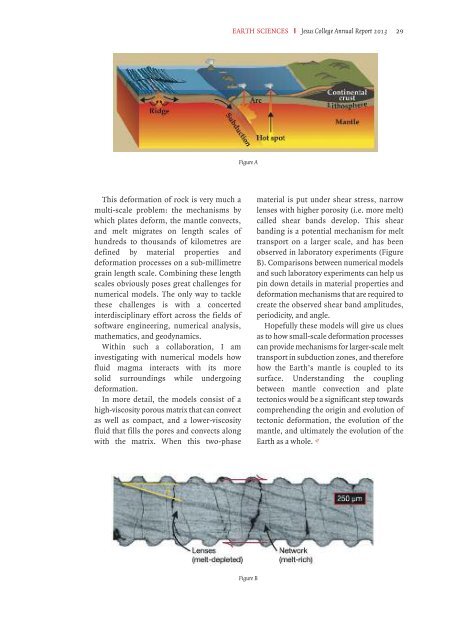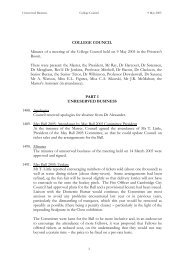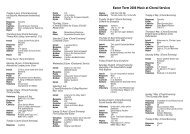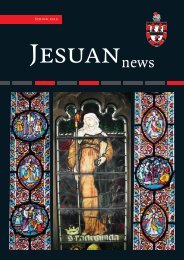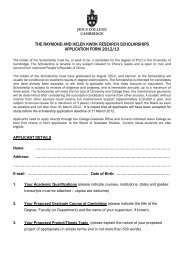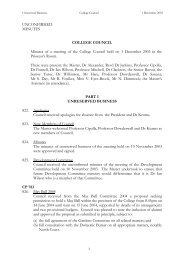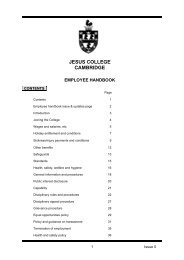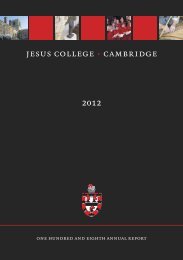2013 Annual Report - Jesus College - University of Cambridge
2013 Annual Report - Jesus College - University of Cambridge
2013 Annual Report - Jesus College - University of Cambridge
You also want an ePaper? Increase the reach of your titles
YUMPU automatically turns print PDFs into web optimized ePapers that Google loves.
EARTH SCIENCES I <strong>Jesus</strong> <strong>College</strong> <strong>Annual</strong> <strong>Report</strong> <strong>2013</strong> 29<br />
Figure A<br />
This deformation <strong>of</strong> rock is very much a<br />
multi-scale problem: the mechanisms by<br />
which plates deform, the mantle convects,<br />
and melt migrates on length scales <strong>of</strong><br />
hundreds to thousands <strong>of</strong> kilometres are<br />
defined by material properties and<br />
deformation processes on a sub-millimetre<br />
grain length scale. Combining these length<br />
scales obviously poses great challenges for<br />
numerical models. The only way to tackle<br />
these challenges is with a concerted<br />
interdisciplinary effort across the fields <strong>of</strong><br />
s<strong>of</strong>tware engineering, numerical analysis,<br />
mathematics, and geodynamics.<br />
Within such a collaboration, I am<br />
investigating with numerical models how<br />
fluid magma interacts with its more<br />
solid surroundings while undergoing<br />
deformation.<br />
In more detail, the models consist <strong>of</strong> a<br />
high-viscosity porous matrix that can convect<br />
as well as compact, and a lower-viscosity<br />
fluid that fills the pores and convects along<br />
with the matrix. When this two-phase<br />
material is put under shear stress, narrow<br />
lenses with higher porosity (i.e. more melt)<br />
called shear bands develop. This shear<br />
banding is a potential mechanism for melt<br />
transport on a larger scale, and has been<br />
observed in laboratory experiments (Figure<br />
B). Comparisons between numerical models<br />
and such laboratory experiments can help us<br />
pin down details in material properties and<br />
deformation mechanisms that are required to<br />
create the observed shear band amplitudes,<br />
periodicity, and angle.<br />
Hopefully these models will give us clues<br />
as to how small-scale deformation processes<br />
can provide mechanisms for larger-scale melt<br />
transport in subduction zones, and therefore<br />
how the Earth’s mantle is coupled to its<br />
surface. Understanding the coupling<br />
between mantle convection and plate<br />
tectonics would be a significant step towards<br />
comprehending the origin and evolution <strong>of</strong><br />
tectonic deformation, the evolution <strong>of</strong> the<br />
mantle, and ultimately the evolution <strong>of</strong> the<br />
Earth as a whole.<br />
Figure B


